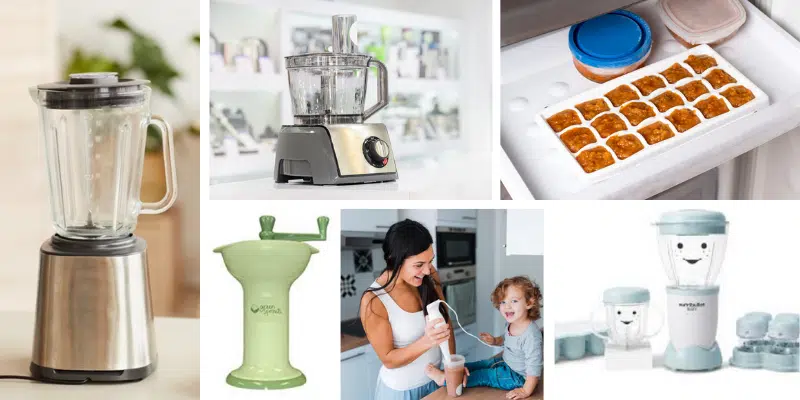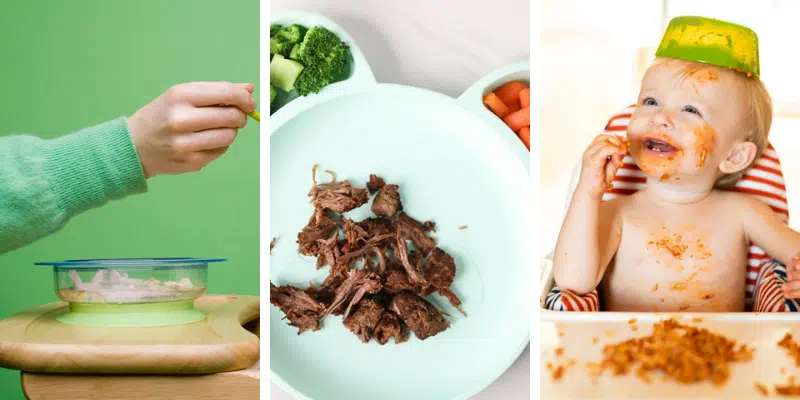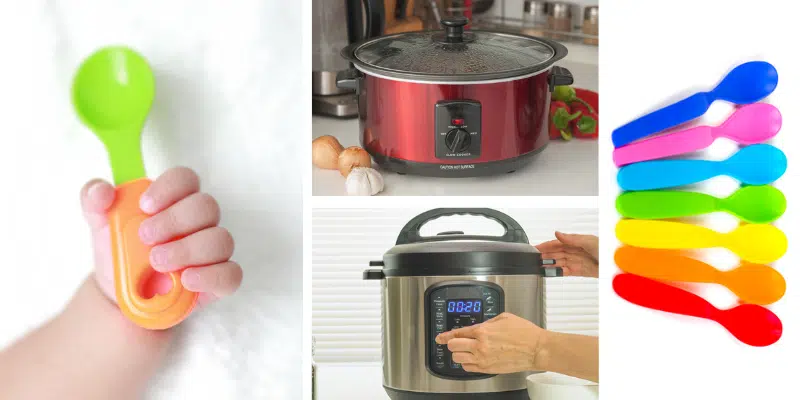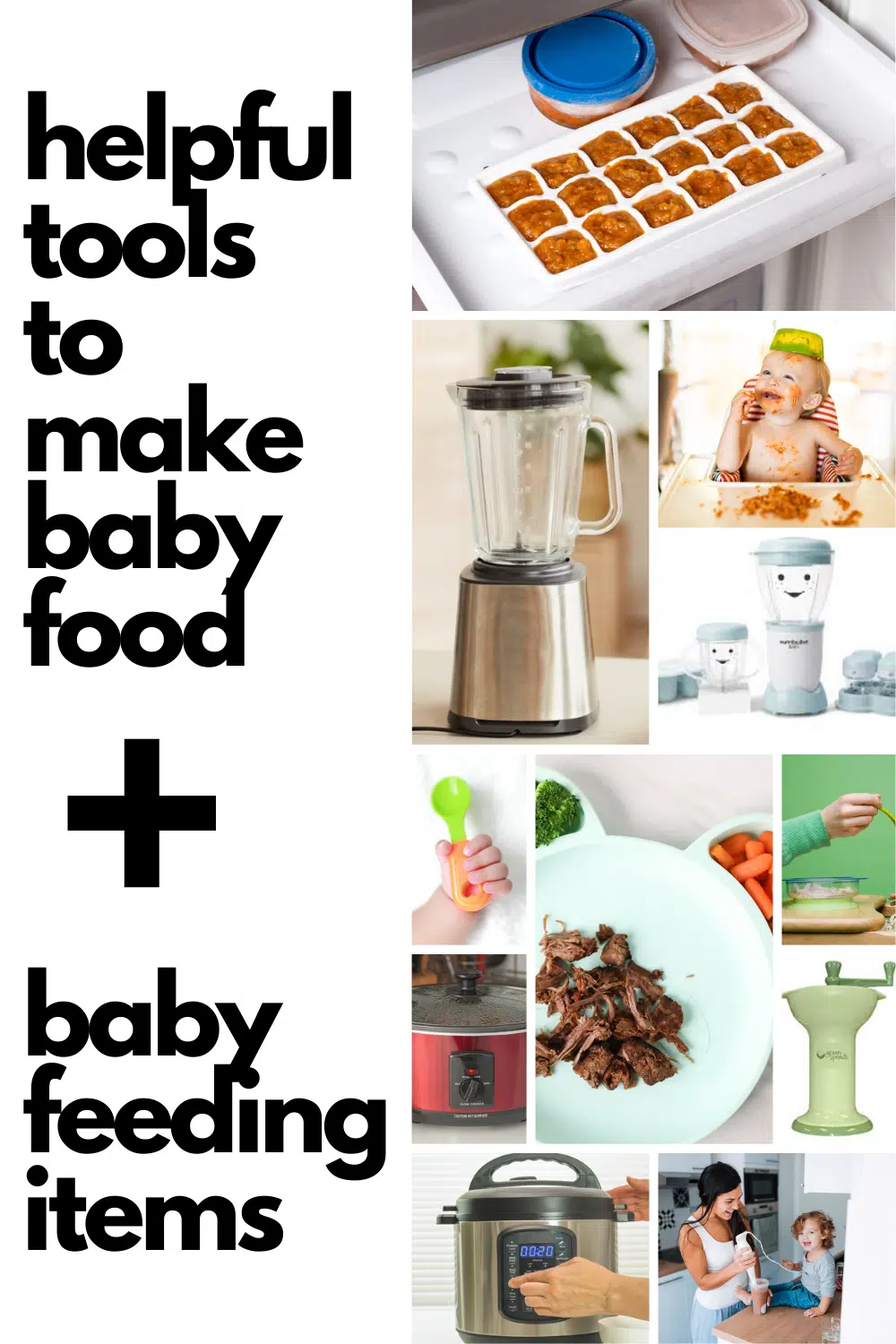Babies can begin eating solid foods around six months of age. By this time they have depleted their iron stores from birth and all their iron needs must be met through their intake of food. This need is most pronounced in breastfed babies: formula is typically fortified with iron, but breastmilk alone cannot meet a baby’s iron needs after six months of age. Iron is essential for healthy body and brain development, and few foods pack as much nutrition bite-for-bite than beef.
This post is sponsored by the Washington State Beef Commission.
In addition to iron, beef is a good source of protein, choline, zinc, and vitamin B. Many moms choose to make their own baby food to ensure their baby is getting the freshest, most nutrient-dense foods to fuel their little bodies but are confused about the role of meats, like beef, in their baby’s early diet.
The professional recommendations from the American Academy of Pediatrics, the Women Infants and Children’s Program (WIC), and the Dietary Guidelines for Americans all agree that introducing solid foods – like beef – to infants and toddlers is essential for healthy body and brain development. Medical evidence shows that early introduction of meats – like beef – is completely appropriate as long as it’s prepared and served in a way that aligns with your baby’s developmentally appropriate feeding stage.
Want to know what kitchen gadgets, appliances, and baby gear will help you feed beef to your baby in a way that’s safe and developmentally appropriate? Read on!
Preparation #1: Puree
Pureeing is the first step in introducing your baby to solid foods. Beef and other meats can be pureed exactly like fruits and veggies! When first starting out, purees should be thin and watery; as your baby develops the skills of moving food to the back of their mouth and swallowing effectively, you can decrease the amount of water, breastmilk, or formula used to thin the puree and make it a little thicker.

Helpful Tools & Utensils for Baby Purees:
Household blender: If you’ve got a blender, you can make baby food. As your baby eats thicker purees it may be hard to get the right texture if you don’t have a super-powerful motor, but you should have no problem blending up thin, introductory purees.
Food processor: This do-it-all kitchen gadget will take you through all of your baby’s eating stages – from initial purees to ground meats to rough-chopped versions of regular table foods.
Immersion blender: This petite gadget takes up less space than a traditional blender and still has the power to produce smooth purees when water, breastmilk, or formula are added.
Mini chopper: A small-sized food processor works great for making small portions of baby food for your little one.
Baby food maker: Baby food makers aren’t required to make baby food, but they sure are convenient. Options like the Nutribullet come with bowls and lids so you can make a batch of food, then portion it into individual containers that work for both storage and serving. Upscale appliances like the Beaba even do the cooking for you. It will steam-cook your meat or veggies in 15 minutes, then blend it up all in the same container! It even has settings to defrost or reheat your baby’s food.
Food mill: A baby food mill will puree or grind food into an appropriate texture, and since they’re small and don’t require electricity or batteries, you can take them with you anywhere for baby food on the go!
Baby food freezer tray: Make your life easier by preparing a big batch of baby purees and freezing them for later use. A silicone freezer tray with lid is helpful for freezing, removing, and defrosting individual portions but here’s a pro tip: you can accomplish the same result with a regular ice cube tray and popping the frozen cubes into a Ziploc bag for longer-term freezer storage.
Preparation #2: Chop
Around 8-10 months of age your baby can graduate to chopped or ground meats. At this age you’ll still be feeding them, but they can also begin self-feeding to practice their fine motor skills. Most of the tools that were useful during the “puree” stage will still be used, and many foods (like cooked ground beef, meatballs, or hamburgers) won’t require much more than chopping them with a knife or breaking up the soft pieces of meat into small, bite-sized pieces.

Helpful Tools & Utensils for Self Feeding Babies:
Suction bowls: Suction bowls are essential for a self-feeding baby. Because they stick to the tray or table, they can’t dump their whole bowl on the floor.
Feeding tray: A divided feeding tray is great for feeding multiple foods. Toddlers are notorious for preferring their foods separated, and it’s easier for them to grab individual foods on a tray than from the bottom of a deep bowl.
Splat Mat: Self-feeding is messy. An easy-to-clean mat can protect your floors (and your sanity).
Preparation #3: Shred
Tender beef shreds easily and is a great addition to your early eater’s diet. Around 10-12 months your baby can also start practicing self-feeding with their own utensils; make sure you choose ones that are crafted with a baby’s ergonomics in mind!

Helpful Tools & Utensils for Feeding Baby Beef:
Slow cooker: A slow cooker (or Crock-Pot) transforms roasts and tough cuts of meat into tender, easily shred-able, and flavor-packed dishes.
Pressure cooker: Pressure cookers (like the Instant Pot) operate similarly to the slow cooker but do the job in a fraction of the time.
Self-feeding utensils: Not all baby utensils are created equal! Long-handled spoons are great for reaching the bottom of the baby food jar but not so great for your little one to use on their own. Utensils like these from Grabease are short and meant to be held vertically which is more natural for your baby, and they have a guard to prevent them from sticking the fork too far down their throat and gagging. These have looped handles which are easy to grasp. Or maybe a curved set would be easy for them to master. There are so many options on the market today, look around and see what might work best for your baby!
Patience: Your Best Feeding Tool
No matter what stage of feeding you’re in or how many fancy appliances you have, the best tool you have to feed your baby well is patience. YOU are the key to helping your child develop a healthy relationship with food, and expressing frustration, anger, or disappointment when your baby refuses to eat makes mealtime stressful for everyone.
Feeding babies tends to get harder as you go; toddlers and preschoolers are notorious for loving a food one day and refusing it the next. It’s common for an adventurous eater to become an uber-picky three-year old. Don’t make a big deal about it. Your job is to serve your child a wide variety of foods at set meal and snack times. Their job is to decide what to eat from the foods you’ve offered. If they opt not to, that’s their choice and they have the opportunity to try again at the next set eating time. Putting pressure on your child to eat or showing disappointment can make them dread mealtimes and may even contribute to increased stubbornness and resistance to trying new things.
Eat with your child, make mealtimes a time of stress-free connection that’s not solely about the food, and get creative with cute and fun plating ideas. Be patient, and your efforts will pay off!
If you have questions about starting solid foods, always consult your physician or health care provider first.












